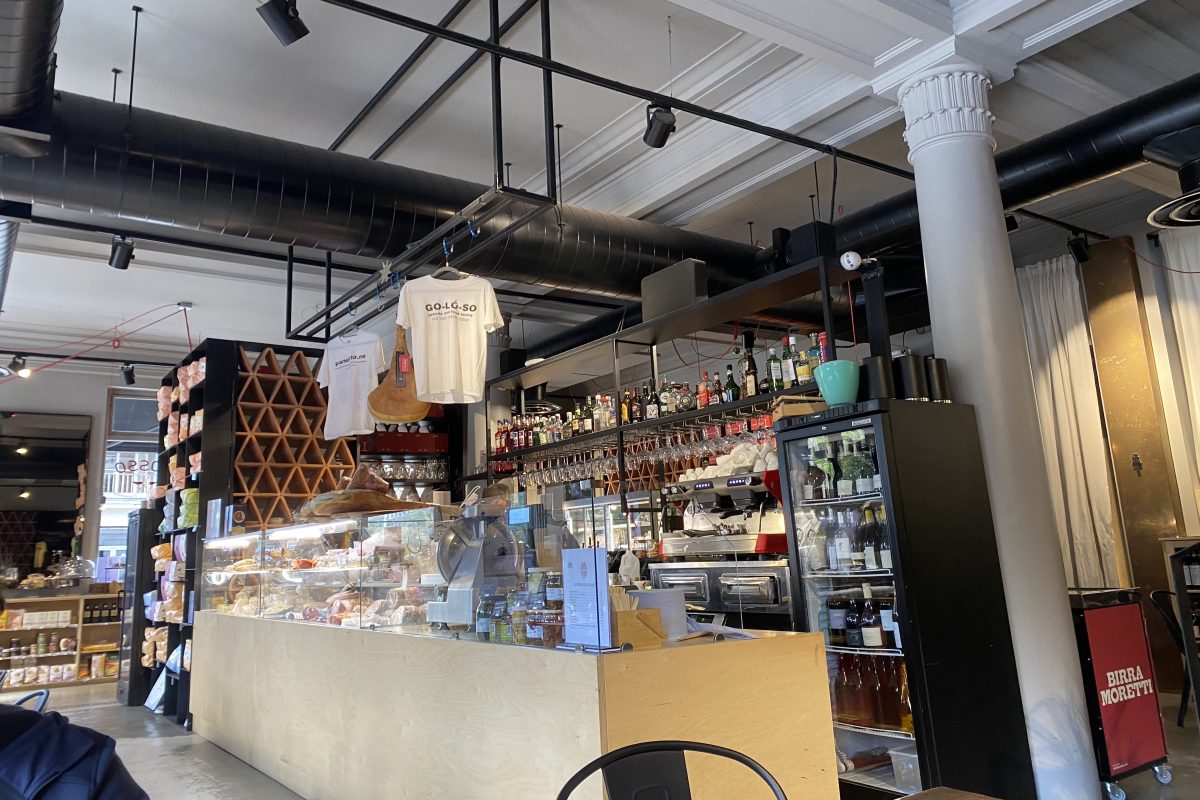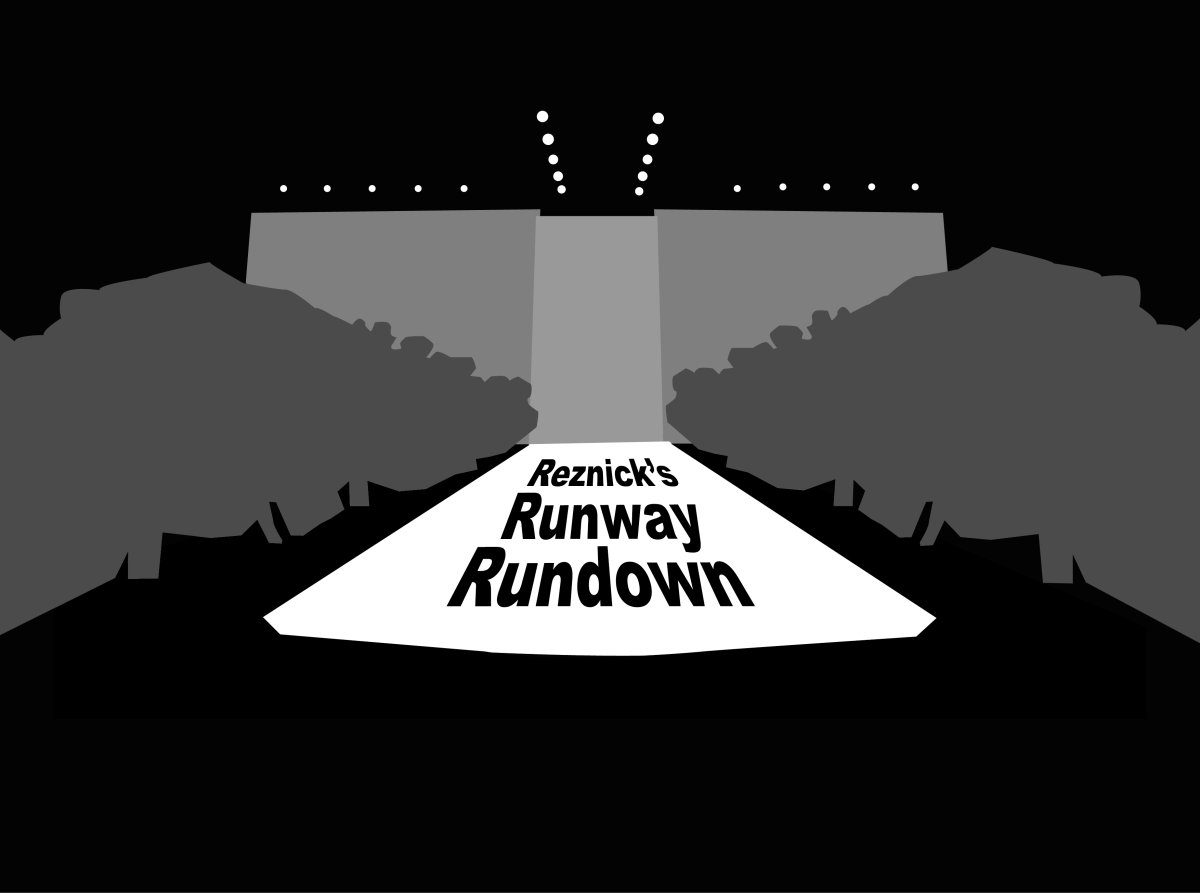From the catwalks of New York Fashion Week, to the glamorous red carpet at the Cannes Film Festival, to the hallways at ASL – consciously or not – fashion is a part of everyone’s daily life.
Throughout history, fashion has always played a large role in society, from depicting one’s social class to representing one’s job, it has and always will be one of the first things noticed of a person.
From jeans being frowned upon in Communist Eastern Europe in the 20th century – due to their western connotation symbol of westernism–, to women in Europe considering a more masculine, tight, provocative attire after WWI to symbolize their independence – either way, fashion has always been a symbol of expression and identity – whether it be suppression or rebellion.
Fashion represents how one expresses his or herself and is how a person chooses to be perceived by others – at first glance that is. At times, one may not be able to find clothing that depicts his or her style and must find alternatives to it. Alexandre Ruimy (’14), while shopping after Winter Break of 2013, with a friend named Marcel Robin, found himself disappointed with the items on display. The only solution he could come up with was creating his own articles of clothing. Marcel and Alexandre took on the initiative of creating a piece that would adhere to their preferences: A leather jacket. “We went into a shop looking for something and we were so frustrated that it wasn’t there, and so we decided to just make it quickly and see what would turn out because the one we had seen in the store was way too expensive, and it still wasn’t what we wanted,” Ruimy explained.
After being asked several times by friends as well as strangers about their personally-created jacket, they realized that it could potentially be a passion to pursue. When, a few weeks later, a hoodie they created received similar praise, they decided to take their passion to a more serious level, establishing their own brand named Elevate.
However, Ruimy and his partner were challenged when it came to the process of developing a clothing line. “We both didn’t know what we were doing, he didn’t go to fashion school, I didn’t go to fashion school either; he hadn’t worked in retail, I hadn’t either,” Ruimy said.
Ruimy and his partner spent the following months experimenting and learning the process of manufacturing and designing, which they mistakenly thought would be simple “At first you always think that it’s easy, but it really isn’t,” he said.
Having first attempted to produce the items of clothing in China, Ruimy and Robin faced challenges, “We tried to make it in China using fabrics from Italy, so we had to ship the fabrics from Italy to London, and then with the fabrics attached to plans for the factories in China, send it there, and then every time they made something it took three weeks to come, and it was just a huge waste of time,” Ruimy said.
Though frustrating, it put them on the right track: They decided to relocate their production to East London. With the new facilities at hand – three different factories and a pattern maker – it only took a few days for an item of clothing to be developed from an idea to a tangible item.
From that point, Ruimy and Robin have developed an urbanly elegant collection for Elevate.
Since their online launch in January, their collection has sold out various times and gained success and repute amongst the modern fashion world; from Kevin Hart sporting a leather biker jacket in London’s nightclubs to Jason Derülo wearing Elevate’s elongated tee on The Ellen Show, Ruimy’s brand has had a lot of success.
For the second collection of Elevate, Ruimy got a marketing team to help both disperse their clothing on people and in stores and publicize it on fashion icons, “Another important thing for us was product placement: Who to put it on, who’s going to wear it, who’s going to see it and how they’re going to see it,” he said.
For Ruimy, being the creative director of Elevate was a distraction and relief from the stress he faced both at school and in his social life. “I don’t want to sound cheesy but, when I’m designing or when I’m with Marcel working, it’s a way for me to get elevated mentally, I just feel above everything and I’m not thinking about anything else, aside from what we’re actually doing, it just feels so great,” he added.
Though not everyone takes their passion for fashion to a professional level, they are at times intertwined with each other. “I like clothes as objects, they’re like pieces of art in a way,” Nicolo Baravalle (’14) said.
Ruimy believes that his day–to–day clothing differs depending on how he feels on that particular day. “For me, personally, it’s how I feel on the day, I wear clothes that reflect both how I feel inside and how I want to be portrayed on the outside,” he said. He sees his style as his only medium of expression, “For my partner and I, fashion is a way to express ourselves, I mean I’m not a good singer, I’m not a good painter, it’s my only creative outlet where I’m allowed to express myself,” he said.
Tamara Rasamny (’14) agrees with Ruimy in the sense that what she wears depicts her character. “I think fashion is a way of expression, you can be creative with your outfits, it says a lot about a person, so my style says a lot about me,” she said.
One’s style is also a way of communicating with others. “I feel like it’s very important to show your style to communicate to people,” Filo Fabrini (’16) said, son of Alessandro Fabrini, Senior Vice President of Beauty, Watches and Eyewear at Burberry.
This trend seems to also be mirrored by the film and music industry. “Magazines and actors influence me, through television, you see how people dress and you start identifying your own style,” Fabrini said.
Fashion has also become an integral part of fame. “I feel like, to be a musician, you not only have to sing well but you also have to dress well,” Fabrini said.
Being fashionable in the music industry will boost one’s success: “If you’re big enough [in the music industry] being a trendsetter will boost your music and vice-versa,” Baravalle said.
Baravalle believes that throughout the years, fashion has always been inherent within the music industry, “Even when you look back at the Beatles’s style,” he said.
Within the school’s boundaries the trend of the music industry seems to have crept into the way students dress, too. Elevate, Ruimy’s brand, has strong resemblance to the Hip Hop world, however, he believes that the connection between the two has been more from Hip Hop getting closer to fashion rather than the other way around. “Hip Hop and fashion go hand in hand now as the image of the artist has almost become as relevant as the artist’s music,” he said.
Ruimy pointed out that rap stars have begun collaborating with distinguished brands in order to further their own reputation. “Whether it’s ASAP Rocky collaborating with Timberland, Kanye West launching his line with APC or Theophilus London and Swizz Beatz attending Chanel runway shows; they all know that if they want their media perception to be accepted by the masses, they’re going to have to look good,” he said.
Ruimy also took advantage of the influence celebrities have by having them wear his creations, “Aloe Blacc wore an Elevate suit on The Voice, Chris Hemsworth is going to wear an Elevate jacket on the cover of a magazine, Jason Derülo and Robin Thicke are both wearing Elevate in their music videos, and we’ve also established a good relationship with Rita Ora,” he explained.
At ASL, for some, fashion plays a large role in their daily lives, while others barely bother themselves with it. One’s unique style is determined by various factors, most importantly their environment and culture. “I think that [there’s a theme between where you’re from and how you dress] because in the culture that I grew up in – elitist Arab society – all of us are really into fashion, we’re all into clothes, everyone dresses quite well, whereas in other places of the world, fashion and style isn’t as important,” Rasamny said.
A person’s culture has a strong influence on the way one dresses. Fabrini believes that fashion is more vital in Europe as opposed to in the United States, as most hig-end brands are French and Italian. He feels as though students at ASL choose a more basic and simple way of dressing, with no notable style trends. “At ASL, people care about what they wear, they dress nice, but there’s no style. I feel like in Europe, fashion is way bigger than in the U.S., and this is an American school,” Fabrini explained.
He also expressed that how one dresses is truly determined by where they’re from and how important it is in their country.
Though some Europeans believe that fashion is something intrinsically tied to their culture, “I think Europeans care more about fashion than Americans, but I am not sure how it is at ASL,” Emma Abele (’16) said.
Abele, though, notes a difference between Europeans and Americans: The latter demographic is not as comfortable as the former in purchasing designer clothing. “I don’t want to pay for designer clothing, and to be honest, I don’t care if other people do,” Abele said.
Whereas some of the Europeans who identified themselves with fashion are willing to spend hundreds on a pair of jeans, this trend does not seem to be continued by numerous Americans.
Some believe that fashion is inspired by the environment they live in. Angie Kukielski (’15) thinks that while ASL students are careful as to what they wear to school, people who have lived in more urban cities are more fashion oriented. “People who have lived in London longer tend to be more into fashion because when you’re in London, you’re in such an artistic metropolitan place, and if you’re from other European countries, or other non–European countries that aren’t America,” Kukielski said.
Baravalle agrees with Kukielski. “Whether you come from a big city or not will influence your style and fashion,” he said.
Some might disagree, but over time, fashion has evolved into an artistic movement resonating with society’s current political, economic and social trends. A form of freedom and expression, fashion has developed into an art: The clothing being the masterpieces, catwalks being museums, and boutiques being the galleries. From Alexander McQueen’s Kate Moss hologram at his 2006 fall runway show, to Karl Lagerfeld’s transforming of Chanel’s fall/winter 2014 catwalk into a luxurious supermarket filled with over 500 Chanel products, the fashion world is constantly renewing and outdoing itself. Each masterpiece created tells a story and expresses a certain emotion; from looking at one’s attire, anyone can reflect on the person’s character and personality. Fashion is the art, one’s body the canvas, the clothing the paint, and one’s environment the paintbrush that helps shape the final masterpiece: One’s style.
nadia_sawiris@asl.org





Mishi Rowland • Feb 10, 2020 at 8:57 am
The blogs are actually the reports from the world of technology. Please keep on posting the fresh blogs. As I do know that you possess the best ever techniques of converting the knowledge of words and make the entire setup understandable to everyone.
https://bit.ly/38g3KFp